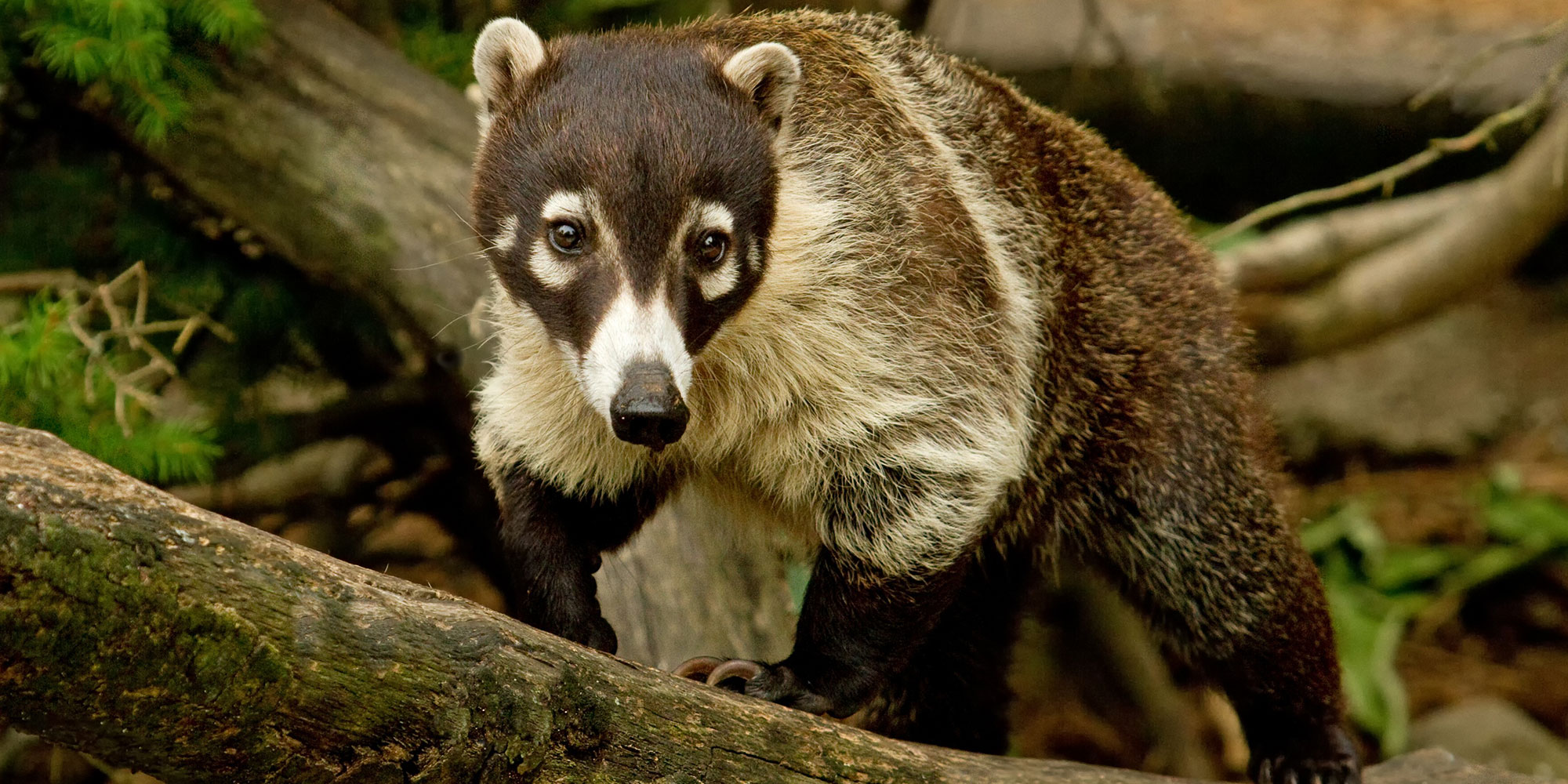White-Nosed coatis live in a variety of habitats from tropical lowlands to drier mountain forests in North, Central and South America. Females travel in groups called bands, which can number anywhere from 4 to 40 individuals while males 2 years and up travel alone.
Coatis are omnivores with a diverse diet, consisting of insects, spiders, lizards and other small animals, as well as fruits, nuts, plants and carrion. They use their long snout to sniff out critters underground, and then use their sharp claws to dig them out.
Coati mating season begins early in the year. During this time, solitary males will start to join female bands. These males will fend off rivals and mate with serval females. As mating season ends, males are forced out of the band and mated females will leave about 77 days later. Moms and pups return to the band about 5-6 weeks after birth.
Unlike the other species of coati, White-Nosed Coati populations are apparently stable, though lack of field data may drastically underestimate their numbers. Deforestation, habitat loss and introduced predators, such as cats and boa constrictors, all pose threats to their continual health. The Eastern and Western Mountain Coati species are either endangered or threatened.
